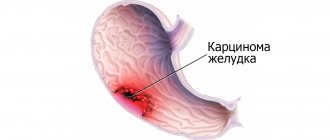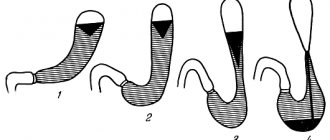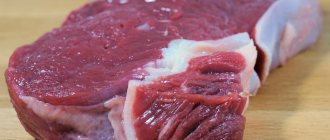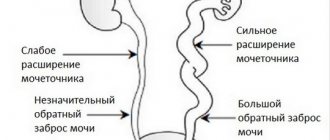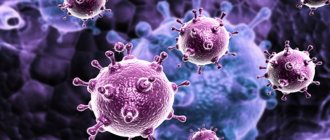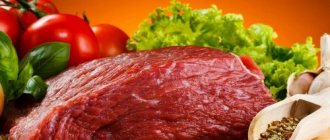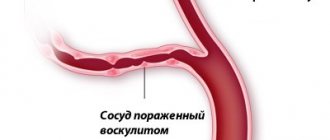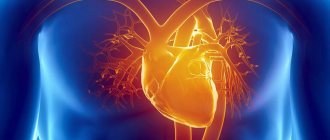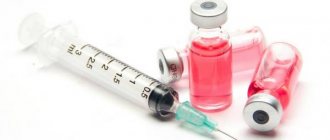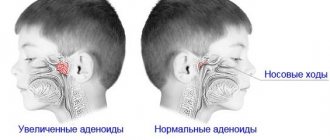A perforated gastric ulcer is the main complication of the acute course of a peptic ulcer or its chronic form. This condition poses a threat to human life, because as a result of perforation of the wall of the affected organ, contents enter the peritoneum.
- Etiology
- Classification
- Symptoms
- Diagnostics
- Treatment
- Prevention
Perforation of a stomach ulcer in most cases affects people of working age. A characteristic feature is that it occurs several times more often in males than in females. In the international classification of diseases, such a disease has its own meaning. The ICD-10 code is K25.
The main factors in the occurrence of the disorder are previously untreated ulcerative lesions of this organ or the pathological influence of the Helicobacter pylori bacterium. The manifestation of symptoms directly depends on the stage of the disease.
The greatest diagnostic value is provided by instrumental examinations. Only their implementation can help establish the correct diagnosis. Treatment of the disease is carried out using surgical techniques, and in the postoperative period it is recommended to take medications and follow a dietary menu.
Etiology
The main risk group for the formation of a perforated defect are people who suffer from a chronic form of peptic ulcer disease, as well as those who have suffered an acute course of such a disorder. Perforation can be caused by:
- inflammatory processes that occur in the immediate vicinity of the main focus of mucosal lesions;
- frequent overeating, because the affected organ cannot cope with large amounts of food;
- an increase in the level of hydrochloric acid, which develops against the background of consumption of certain foods. It is because of this that an important part of treatment is diet for perforated ulcers;
- addiction to alcoholic beverages, as well as fatty and spicy foods;
- regular excessive physical activity;
- penetration of the bacterium Helicobacter pylori into the body.
There are also several factors that increase the risk of developing this disease. These include:
- decreased immune system levels;
- violation of sleep duration or long absence;
- long-term influence of stressful situations;
- taking certain medications for a long time, including non-steroidal anti-inflammatory substances, anticoagulants, corticosteroids and chemotherapy drugs;
- maintaining an unhealthy lifestyle, in particular nicotine abuse;
- hereditary predisposition;
- the course of other gastrointestinal diseases;
- irrational diet. This may include eating dry food, eating excessively hot or cold food.
Factors that increase the risk of perforated gastric ulcer
Diet
For several months after the operation, the patient will have to follow strict rules - he will be prescribed a diet.
Immediately after surgery, two days later you are allowed to drink fruit jelly and weakly brewed tea. Another day later, a person can eat soft-boiled eggs, grated vegetable soup, as well as buckwheat and rice porridge. After two weeks, steamed cutlets, cheesecakes, and vegetable purees can be gradually introduced into the patient’s menu. Only after a month is it allowed to eat baked goods, but only yesterday’s baked goods.
A strict diet after treatment requires you to forget about some foods forever:
- about smoked meats
- about marinades
- fried and highly seasoned foods
- about canned food
Maintaining a healthy lifestyle, diet, proper nutrition, quitting smoking and alcoholic beverages will help you forget about stomach problems. After the operation and in the future, the person needs to rest as much as possible and walk in the fresh air, try to avoid strong physical exertion and psycho-emotional shocks.
Classification
In gastroenterology, there are several types of perforated gastric ulcers. The first of them divides the disease into several stages of progression and manifestation of symptoms:
- initial - lasts approximately six hours after perforation. During this time, acidic stomach contents enter the peritoneum, which is manifested by sudden and severe pain;
- moderate severity – occurs from six to twelve hours. Characterized by a decrease in the expression of symptoms of a perforated ulcer;
- severe - from 12 hours to one day from the beginning of perforation. Purulent peritonitis and abscesses develop.
Classification depending on the clinical course suggests the existence of several forms of the disease:
- typical – leakage of perforated contents into the peritoneal cavity occurs;
- atypical - in which fluid leaks into the omentum or omental bursa, as well as other areas of the abdominal cavity;
- combined - with hemorrhages in the gastrointestinal tract or abdominal cavity.
Since such a disease is accompanied by peritonitis, there are several stages of its development:
- primary pain shock;
- bacterial peritonitis;
- imaginary improvement in the patient’s condition;
- formation of purulent peritonitis.
Types of the disease due to the reasons for the appearance of perforation:
- perforation of a chronic or acute ulcer;
- damage to the walls of the organ by a tumor;
- circulatory disorders;
- influence of parasites.
Depending on the location of the outbreak, the disease is divided into:
- ulcer of the stomach, its anterior or posterior wall, as well as the greater or lesser curvature;
- duodenal ulcer;
- pyloroduodenal ulcer;
- combined ulcer, with simultaneous damage to the stomach and duodenum.
general information
Short description
Duodenal ulcer is a multifactorial disease with the formation of duodenal ulcers (DU), with possible progression, chronicity and development of complications.
An acute ulcer is a deep defect in the mucous membrane, which penetrates to the muscular plate of the mucous membrane and deeper. The reasons for the formation of acute ulcers are similar to those for erosions. Acute ulcers are often solitary; have a round or oval shape; in cross-section they look like a pyramid. The size of acute ulcers ranges from several mm to several cm. They are localized on the lesser curvature. The bottom of the ulcer is covered with fibrinous plaque, it has smooth edges, does not rise above the surrounding mucous membrane and does not differ from it in color. Often the bottom of the ulcer has a dirty gray or black color due to the admixture of hematin hydrochloride. Microscopically: mild or moderate inflammatory process at the edges of the ulcer; after rejection of necrotic masses at the bottom of the ulcer - thrombosed or gaping vessels. When an acute ulcer heals within 7-14 days, a scar forms (incomplete regeneration). In rare cases, an unfavorable outcome may lead to a chronic ulcer.
Perforation of an ulcer (perforation) is the occurrence of a through defect in the wall of the duodenum and the leakage of contents into the abdominal cavity.
Symptoms
Symptoms of a perforated gastric ulcer will differ depending on the stage of the disease. Thus, at the initial stage of development of the pathological process, such external manifestations will be expressed as:
- the occurrence of acute pain in the stomach, which can spread to the navel, right or left hypochondrium, forearm. Painful sensations take a long time to manifest;
- rare bouts of vomiting;
- decrease in blood pressure, however, pulse values are normal;
- shallow and rapid breathing;
- pale skin;
- increased sweating;
- accumulation of gases in the peritoneum.
During the development of bacterial peritonitis, there is a slight decrease in signs of the disease and an improvement in the patient’s condition. In such cases the following are expressed:
- increased body temperature;
- pain reduction;
- increased heart rate;
- changes in blood pressure;
- increased gas formation;
- symptoms of increasing intoxication;
- dryness of the tongue and the appearance of a grayish coating on it;
- euphoria.
Perforated stomach ulcer
If at this stage of the perforation of the stomach ulcer the patient was not provided with medical assistance, then the person proceeds to the last and most severe stage, in which the symptoms will be as follows:
- severe vomiting, which often leads to dehydration;
- dry skin;
- temperature drop;
- the pulse quickens to such an extent that it reaches one hundred and twenty beats per minute;
- decrease in systolic blood pressure;
- lethargy and slow reaction;
- increase in abdominal volume - occurs due to the accumulation of large amounts of liquid and gases;
- disruption of the process of urine emission - the urge becomes more rare, and over time completely disappears.
If symptoms of a perforated gastric ulcer of the third stage occur, it is almost impossible to save the patient’s life, even after surgery.
Total information
Gastric perforation occurs in one person per 5 thousand adults - this figure is considered high.
This condition can complicate many stomach diseases, but most often develops with gastric ulcers - in every tenth patient of all who have been diagnosed with this. And among all the conditions that complicate gastric ulcer, it is observed in 15% of all clinical cases.
Most often, young men of working age are affected - from 20 to 40 years old (although in the last 10 years the trend is that patients aged 50 years and older began to suffer more often from this pathology). In general, in men, gastric perforation for various reasons occurs 15-20 times more often than in women.
The peak of gastric perforation occurs in the autumn and spring periods. This is explained by seasonal exacerbation of peptic ulcers of the stomach - it is with this diagnosis that gastric perforation most often occurs.
Violation of the integrity of the stomach for other, non-ulcer reasons accounts for about 10% of all clinical cases - mainly affecting school-age children and young people aged 20 to 30 years.
The occurrence of this pathology not only creates problems in itself, but also signals the fact that the disease is neglected - poor diagnosis or its complete absence
Diagnostics
Establishing the correct diagnosis involves a wide range of instrumental examinations. But before prescribing them, the specialist needs to perform several manipulations:
- studying the patient’s medical history and life history - this will help determine some predisposing factors in the formation of the disease;
- Conducting a thorough interview and physical examination, which includes palpation of the abdomen, as well as measurement of temperature, blood pressure and pulse. This will make it possible to determine at what stage the disease is occurring.
However, the greatest diagnostic value is:
- radiography of the peritoneum in several projections - to identify the presence of free gases and liquid in the peritoneum;
- CT – for direct detection of perforated ulcers;
- Ultrasound – to identify the focus of pathology and hypertrophied area;
- EGDS is aimed at identifying such a disease in those patients who do not have free gas and fluid in the peritoneum. This procedure makes it possible to visualize double perforations, hemorrhages and multiple ulcerations. It is after such an examination that the gastroenterologist decides which operation to perform for treatment;
- diagnostic laparoscopy – indicated for use when other diagnostic methods are ineffective.
Using the above examinations, a perforated gastric ulcer is distinguished from diseases such as acute appendicitis, cholecystitis, pancreatitis, abdominal aortic aneurysm and myocardial infarction.
Atypical form of perforated ulcer
A perforated ulcer is a rapidly occurring communication between the lumen of the stomach or duodenum and the free abdominal cavity. About 10% of ulcers are complicated by perforation.
Symptoms, course. 3-4 days before the punch
Sometimes an atypical form of gastric perforation is observed. In this case, the contents of the stomach enter the omental bursa, retroperitoneal tissue, or the area limited by the adhesions. In this case, the characteristic symptoms may be blurred and diagnosis by external manifestations is difficult.
Treatment
For perforated gastric ulcers, surgical operations that require patient preparation are indicated. This consists of removing gastric contents from the peritoneum and restoring blood pressure levels. In addition, the following is carried out:
- establishing the time that has passed since the development of the disease;
- determination of the etiology, volume and localization of the ulcer;
- identifying the level of severity and spread of peritonitis;
- studying the characteristics of the body;
- confirmation or absence of other diseases.
For therapy, several operations for perforated gastric ulcers are used, some are aimed at preserving the affected organ, others are radical, with complete excision.
The first group includes suturing the perforated area. This type of surgery is performed only on young patients. The operation consists of excision of the edges of the ulcer and stitching them together with two rows of sutures. After completion, drainage is installed.
Suturing of a perforated gastric ulcer
Radical medical interventions include complete or partial resection of the stomach. The main indications for implementation are hemorrhage, suspicion of a malignant tumor or the course of purulent peritonitis.
If patients seek help from specialists in a timely manner, patients undergo minimally invasive, laparoscopic or endoscopic operations.
During the postoperative period, patients should take certain medications, in particular:
- antiulcer;
- anti-Helicobacter and antisecretory substances;
- antibiotics and detoxification therapy.
The most important rule for a speedy recovery is to follow the diet menu, which is compiled only by the attending physician. A strict diet is followed for six months. The basic rules of such nutrition are:
- frequent and small meals six times a day;
- steaming dishes, and it is also not prohibited to boil, stew and bake foods;
- room temperature of food.
The diet after surgery for a perforated gastric ulcer involves a complete rejection of:
- fatty meats, poultry and fish;
- rich broths;
- baking and bakery products;
- smoked meats and offal;
- canned food and marinades;
- legumes and mushrooms;
- hot spices and sauces;
- strong coffee and cocoa;
- sweets such as chocolate and ice cream, honey and jam.
Postoperative period and possible complications
After the operation, the patient is prescribed medication, rest is ensured, and a strict diet is prescribed. However, a number of special exercises are recommended in combination with breathing exercises for rapid tissue regeneration and restoration of the body’s strength. After 2-3 days the patient can get back on his feet, after two weeks the person is sent for outpatient treatment.
Postoperative complications are associated with the development of pneumonia, purulent processes, and suture dehiscence. There are cases when food stagnates in the stomach, then probing is used to suction it out, and then conservative therapy and diet are prescribed. If repeated peritonitis occurs, surgery is scheduled again.
However, following the recommendations of doctors, patients recover quite quickly and can return to their usual way of life, subject to some medical recommendations.
Prevention
To prevent people from having problems with perforated stomach ulcers, it is necessary to adhere to several rules of prevention:
- lead a healthy lifestyle;
- adhere to nutritional recommendations and strictly follow the dietary menu;
- use medications only after a doctor’s prescription, in compliance with the prescribed dosage;
- promptly treat peptic ulcers, which can lead to the formation of such a disease;
- Regularly, approximately twice a year, undergo preventive examinations with a gastroenterologist.
It is impossible to unambiguously determine the prognosis of the disease, since it depends on several factors, such as the degree at which the disorder was diagnosed, the age category of the patient, the volume of the perforated hole and the presence of concomitant ailments. Even surgical intervention cannot guarantee a favorable outcome.
Symptoms
The clinical picture of perforation of the gastric wall is quite varied and depends on the stage of this pathological condition.
During gastric perforation, three successive stages are distinguished:
The shock stage begins from the moment the stomach wall breaks through and its contents fall on the surface of the peritoneum. The main clinical manifestations of this stage are as follows:
- stomach ache;
- deterioration of general condition;
- change in the patient's behavior.
Characteristics of pain:
The following changes in the patient's behavior are observed:
- excitation;
- the patients rush about, unable to find a place for themselves, screaming.
